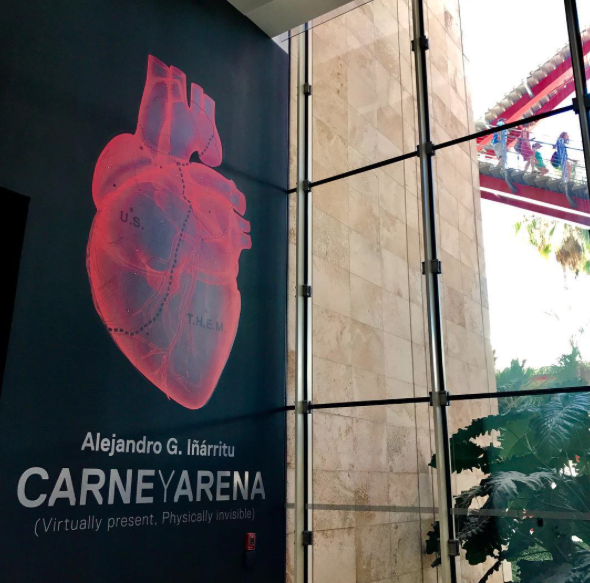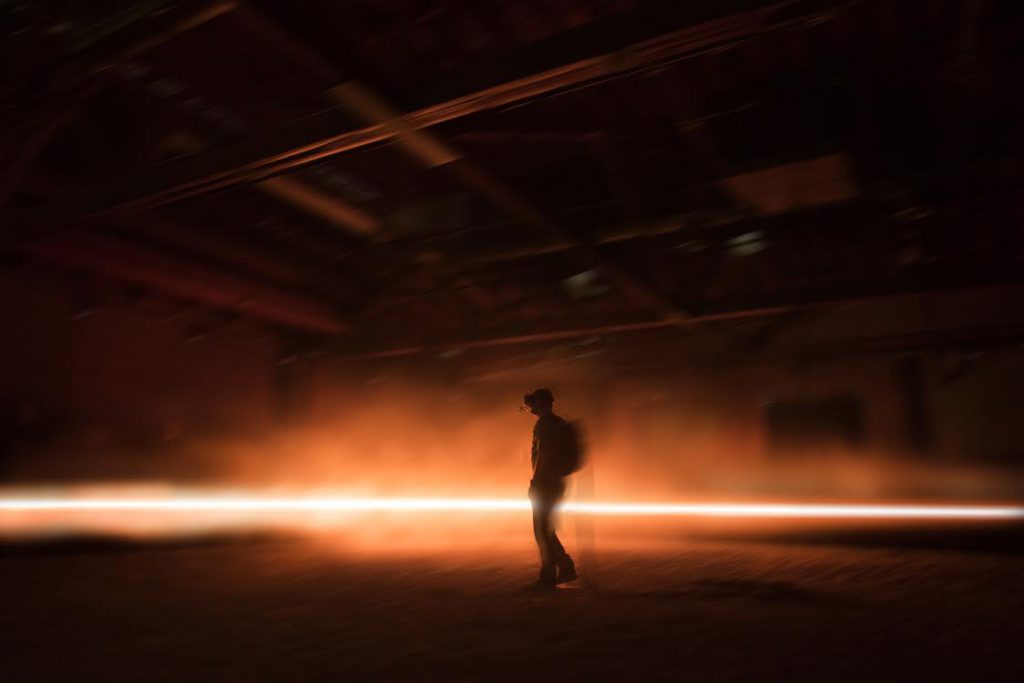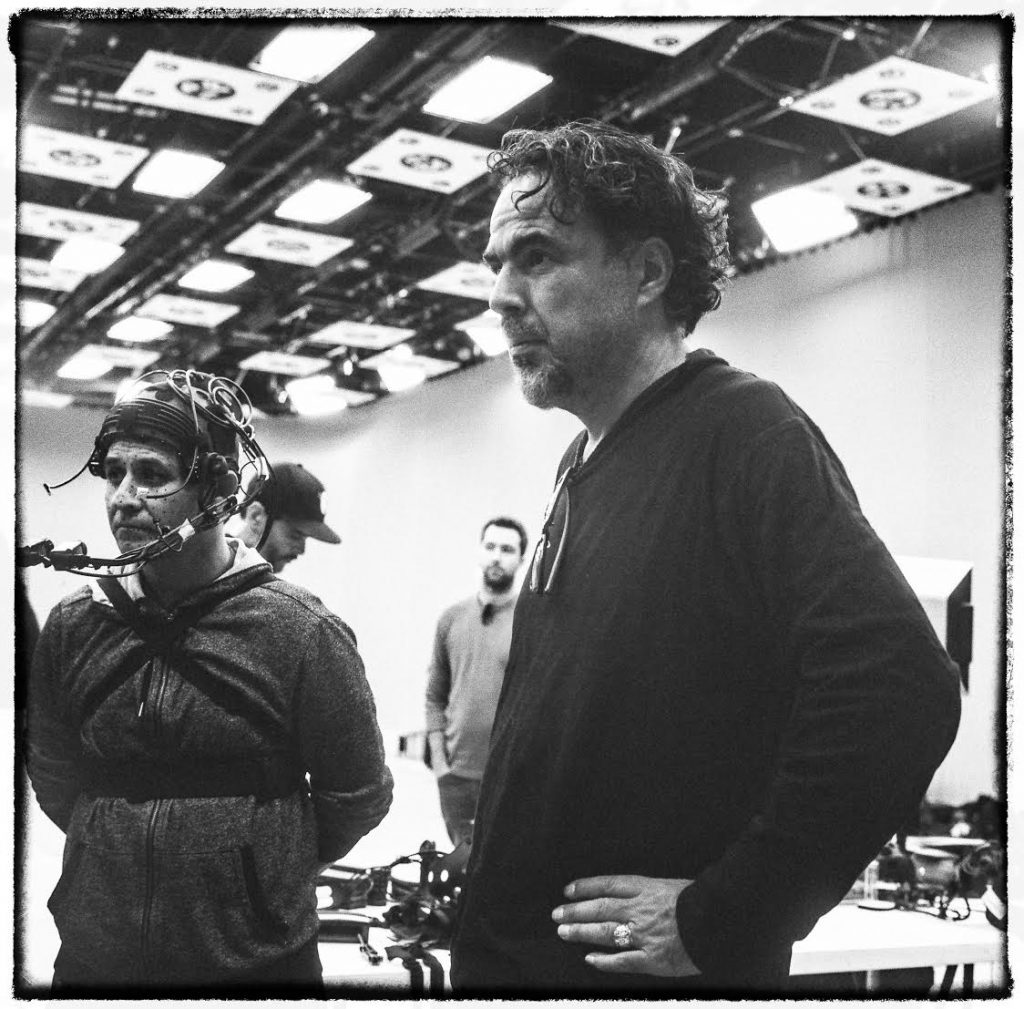Alejandro Iñárritu’s art and virtual reality installation, “Carne y Arena”, opened at LACMA in early July for a limited run, after debuting at Cannes and having already spent some time at Milan’s Fondazione Prada. I visited this week — the week of the Charlottesville horrors — and am still raw from the experience. It’s a powerful piece of art with social and political implications that speak to our country right now.

For some time, VR storytellers have been talking about the ability of the medium to create empathy. “Carne y Arena” will dispel any doubts about the pure power of this medium, especially in the hands of a master such as Academy Award-winner Iñárritu (who directed The Revenant and Birdman and Babel.) It’s impossible to emerge from this exhibit without a visceral reaction to the risks and dangers of the journey — empathy is multiplied exponentially.

User experiencing the art installation. Photo credit: Emmanuel Lubezki
To enter the installation is to experience what it is like to cross the border to this country, something that Southern Californians have heard of, but that most cannot truly imagine. Except, of course, for the thousands of people who attempt the journey each year. Between the dark sand-covered room and a VR Headset strapped on my back, I was immersed in a terrifying world for 6 1/2 minutes, the time made all the more intense by physical sensations (bare feet, time spent in a freezing cold holding cell) and a full range of emotions (fear, horror, sympathy). It’s not for the faint of heart, and certainly not for anyone under 16.

Alejandro G. Iñárritu directing a baker from El Salvador named Yoni. Yoni is dressed in a motion-capture suit and recreating a harrowing moment on his journey. Photo credit: Chachi Ramirez.
Iñárritu’s work is extraordinarily simple and pure. His storytelling power comes from the truth. He interviewed immigrants who had made the crossing and reconstructs the experience of a surprise Border Control encounter, complete with helicopters, guns, and dogs, and lots of loud noise. As a viewer – alone in the space with two staffers making sure I didn’t walk into a wall — I was plunked smack into a developing nightmare; it was overwhelming and suitably terrifying.
Equally powerful are a series of video portraits in a gallery that visitors pass through after the installation in the desert. Shot by Iñárritu’s Academy Award-winning Cinematographer, Emmanuel Lubezki, the images are set back into the wall so the viewer must get up close to read the personal stories that scroll across a small screen. By reading the words that are superimposed onto a steady gaze from a real person – one whose story I had just been a small part of – I was drawn irrevocably in. The stories stayed with me, irreversible trajectories made up of small decisions that led to the unbelievably risky journeys. And new lives.

Design: Neil Kellerhouse
A visit to see Carne y Arena requires a timed-ticket and for the moment, tickets are sold out. However the power of the piece, paired with it’s timeliness, makes me think that it will be around for a long time. Add yourself to this list to be alerted of new tickets that will be issued in September: http://www.lacma.org/carne-y-arena#email-notifications.
Be sure to read this wonderful reflection about the experience from @Cmonsta (Carolina Miranda) of Los Angeles Times; she includes the parallel of the Pilgrims on the Mayflower and reflects upon what it means to be an American. You can hear her discuss it on KCRW’s Press Play, as well.

